Abstract
A limited, simple observation study was completed as a portion of a psychology major course requirement toward the completion of a Bachelor’s Degree in Psychology.
The observation study was conducted over a period of six hours in an open-air market at the vacation destination location of Key West, Florida, during the daily event known as Sunset Celebration.
Approximately 2,000 people were present during the course of the observation study, varying in age from infancy to the elderly. The purpose of the academic-based study was to observe the specific shoplifting tendencies of a broad group of individuals, their unambiguous item of choice (or gender-specific) shoplifted article, if any of those witnessed in the act were encouraged, prompted or coerced to shoplift, and rather the absence or presence of anti-shoplifting placard affected a significant difference, or was effectual in deterring and/or reducing the number of shoplifting occurrences.
Introduction
According to Abraham Maslow, humans require basic biological necessities to live. Among those necessities are “oxygen, food, water, and relatively constant body temperature” (Simons, Irwin, Drinnien, 1987.) However, absent from Maslow’s theory appears the requisite of gathering excessive or unneeded trinkets, toys, or other marketed items.
In observing human behavior, one may question unusual and abnormal behaviors among humankind; one of those unacceptable behaviors labeled as ‘abnormal’ is the act of Shoplifting. Why then, do some who appear to have their hierarchy needs to be met, take the risk of Shoplifting?
It has been commonly noted that some who practice this form of theft, do it for the “thrill” of knowing that they have succeeded in getting away with a petty crime. Others are addicted to the act, as is the case of kleptomaniacs, or pressured by peers, or merely enticed to steal or change price tags on an item if short of funds.
Psychologists have defined several reasons why this behavior occurs, with as many reasons as there are shoplifters. Shoplifting is a serious crime affecting most, if not all, retail businesses and is partly responsible for increases in merchandise prices and customer services. Numerous methods exist to reduce Shoplifting among retail establishments.
Retailers educate their employees to be aware of the shoplifter and practice both subliminal and overt methods to reduce the occurrence as much as possible. For the shoplifter with diagnosed comorbidity, treatments have been established. Various intense and directed therapies are common for those who suffer kleptomania, which is formally diagnosed as a compulsive personality disorder involving theft….
Literature Review
The two most common types of shoplifting treatments either directly treat the shoplifter through therapy by a professional or attempt to prevent Shoplifting through response and prevention strategies in the retail environment.
An impressive evaluation of the most frequent means to lessen Shoplifting divulge that case study research to be deficient inappropriate experimental control to be persuasive; and that the most promising tactics are those means that make an attempt to prevent Shoplifting in the retail environment.
Though, the more global response prevention methods may well benefit if an account of the total volume of shoppers were controlled; thus, providing a ratio of shoppers to prospect to shoplift (Glasscock, Rapoff, Christophersen, 1988).
According to a study of shoplifting behaviors and the existence of comorbidity published in the American Journal of Psychiatry; Blanco, Grant, Petry, and Simpson reported:
“The National Association of Shoplifting Prevention estimates that one in 11 people have shoplifted during his or her lifetime and that men are as likely to shoplift as women. In fact, more than $13 billion worth of goods is stolen from retailers in the United States each year.
Shoplifting results in high costs to the legal system and commerce. Despite these costs, Shoplifting has historically received relatively little attention from clinicians and researchers. As such, our understanding of the basic aspects of this behavior is incomplete” (Blanco et al., 2008).
Shoplifters do not fall into a specific profile. According to an interview with UCLA psychiatrist Dr. Heather Krell on the Good Morning America television news production, “the drive to shoplift is similar to the drive someone has to become a star.” Krell maintains the fact frequently shoplifters are often misinterpreted as individuals.
All too often, shoplifters are thought to be of a specific type or kind, and it is possible some actually need the items they burgle. Frequently that is not the case. Social status is diverse, as well as economic and educational factors, and fame has no bearing on the shoplifter’s propensity to or the legal outcome of the crime.
In short, shoplifters do not fit a particular profile, although other studies in the review make attempts to form one. On average, a shoplifter steals an average of 49 times before being apprehended. Treatment for Shoplifting is complex, but shoplifters can seek out some effectual self-help groups that provide assistance in breaking the pattern (Krell, 2002).
Research shows that various measures designed purposely at frequently stolen products can effectively reduce theft. McNees and colleagues confirmed that specific signs, but not general caveat reduced retail theft. In addition to the possibility of increasing the presence of security personnel and visible security cameras, other means of management can make an impact on the defense aligned with Shoplifting.
Owners, managers, and employees must make certain their stores are designed and arranged properly to help eliminate thievery from both the amateur and the professional thief.
By carefully and purposefully improving store displays and product placement, making surveillance easier for the staff, reducing the number of exits, coves, and recessed areas, strategically mirror placement, refraining from placing items next to exits, equipping the store with bright lighting, and expediting the check-out process, are ways combat theft opportunities for the shoplifter (McNees et al., 1976).
Further, in the 1976 study, as their study of Shoplifting revealed theft was decreased through the use of moral signage, the use of specifically designed anti-shoplifting signs showed reduction is shoplifting occurrences without affecting sales either negatively or positively.
However, when the merchandise was overtly identified as having a greater recurrence of being selected by shoplifters, shoplifting indicators, and occurrences were effectively diminished (McNees et al., 1976).
Even with preventative measures in place, the knowledge concerning the nature of factors and occurrences are stifled greatly due to the measurement methods. There may well be an enormous amount of unidentified and prosecuted incidents of the crime.
Supplementary, valuable data could be garnered if a direct and concentrated focus were placed on examining and creating a more accurate measurement, coupled with an incentive to do so. Although gathering objective information is not easy, there is a need for more effort on behalf of criminologists and behaviorists, not forgetting that the retailer has the obligation to report loss through pilferage (Buckle, Farrington, 1984.)
The coincidence of Shoplifting as an offense with another crime is a relation that worth noting. A study of the relation between Shoplifting and burglary indicated that Shoplifting plays an instrumental role in the “offending patterns of prolific burglars” (Schneider, 2005).
In Schneider (2005), a survey of a number of convicted burglars revealed that 88 percent of the participants also committed shop theft, which leads the author to suggest that the consideration of Shoplifting as a less serious crime is a less efficient strategy in overall crime reduction.
Accordingly, the following findings contribute to the existent notion of prevention of Shoplifting, where such prevention is often seen as the responsibility of the shop owners.
Additionally, the findings confirm the concept that criminals operate “outside their perceived ‘boxes’” (Schneider, 2005), and thus, it is likely that shoplifters might commit other crimes, although these crimes should stay within a certain comfort zone, in which the types of crimes are similar, e.g. Shoplifting, theft, burglary and etc.
Explaining Shoplifting, it is important to note that there are several factors to consider, where the review of shoplifters’ profiles and characteristics might not cover. The factor of emotions is believed to be of significance in explaining the shoplifting behavior.
In Babin and Babin (1996), a study of emotions as a predictor of the shoplifters’ behavior based their study on the concept that retail stores’ environments provoke certain emotions, among which the emotions are leading to spending more time and money.
In that sense, the study argues that if such emotions “can enhance the chance of a purchase, similar environmentally evoke emotions may enhance the chances of theft as well” (Babin and Babin, 1996). In particular, it was found that the emotions were an important factor for adolescents more than college students and adults, where feelings of dominance and power were associated with shoplifting situations.
For college students and adults, the significant factors were found to be beliefs concerning the moral equity of Shoplifting and moral beliefs, respectively (Babin and Babin, 1996). The exceptions might be seen in that such findings are related more to the occasional shoplifter, rather than professional, wherein the latter it can be assumed that emotions play a lesser role with the act being reasonably calculated.
The focus on adolescents in studying Shoplifting as a phenomenon is widely stemmed from the fact that such a phenomenon is perceived a more common, and more conducive to prevention. In that regard, studying preventive practices, most of them pay little or no attention to the causes of such a phenomenon. (Cox et al., 1993)
In Cox, Anderson, and Moschis (1996), an analysis of the literature outlined several social factors contributing to Shoplifting as an adolescent behavior. The factors covered in the study included the influence of peers and the role of parents.
The exposure to friends who shoplift appeared to weaken the moral objections to shoplift, while the parental bond was found to strengthen them. The correlation among the aforementioned factors established a profile, “in which youth with strong parental attachments tend to socialized less with peers who shoplift, and this further decreases their involvement in shoplifting” (Cox et al., 1993).
The influence of peers can be seen from the perspective of a proxy crime, in which Shoplifting is considered as a typical representative. In Kivivuory (2007), a study of Shoplifting in Finland revealed that in a nationally representative community sample of 6,279 15-16-year-old respondents, 7.2 percent were found to shoplift for someone else.
This type of proxy crime was mostly associated with a specific lifestyle, characterized as dating-oriented, which involves spending time with older adolescents. Additionally, it can be seen that the influence of peers was evident, and with the exception of payment as a reason, the most important factors included pressure to steal and to seek popularity among peers (Kivivuori, 2007).
Addressing the reliability of previous studies on shoplifters’ profiles, it was argued that the provided data are usually secondary, where their source is either retail security personnel or law enforcement officers. In that regard, a study was conducted examining Shoplifting through covert camera observation in order to address the issue of reliability.
In Dabney, Hollinger, and Dugan (2004), the main argument is that direct observation can be considered as the least biased method of gathering shoplifters’ information. The acquired characteristics of the demographic and behavioral profile were consistent only to some extent, with previous researches.
Generally, the study found that 8.5% of the population entering the observed location, a retail drug store in this case, committed “an act of shoplifting while on the premises” (Dabney et al., 2004). The consistencies with other researches were evident in the findings that men were slightly more likely to steal than women, as well as the engagement in the theft of persons from the lower or working class.
In terms of discrepancies with other observational data and official data, the study indicated that age and race characteristics differed, where, for example, the juvenile and young adult category was not predictive of Shoplifting. On the contrary, the most common shoplifters were found to be middle-aged (34-35).
The demographic profile showed that “nonwhites were no more likely to shoplift than were whites” (Dabney et al., 2004), although race/gender grouping revealed that in females there are some noteworthy patterns, where white females were least likely to steal, in opposite to Hispanic and black females.
Problem Statement
This information brings this researcher and author to ask the question: Beyond Shoplifting for basic survival needs or with comorbidity diagnosis; is this form of theft one of excitement, enticement, or convenience, and does the presence of visual reminders of honesty deter, or possibly prevent, the act of Shoplifting?
It is the purpose of this limited natural observational study to validate and analyze a tri-fold theory that
- posting a visual message will prevent or reduce the theft (seemingly) unattended goods;
- that males and females opt to choose gender-appropriate goods as their choice of goods when Shoplifting;
- either males or females can be convinced or encouraged by others in their company to shoplift.
Methodology
Participants
The convenience sampling of participants to be observed in a natural state without researcher interference consisting of a multitude of people, which include male, female, adult, teen, and children; present at Mallory Square Sunset Celebration, in Key West, Florida.
Item Selection
On an eight-foot table, 80 bright orange pencils imprinted with Key West 2009 were placed on the left side of the table horizontally, spaced ten pencils across, and five rows down, occupying approximately one-half of the table surface.
On the right side of the table, small bubble jars (0.6 ounces each) adorned with a bright orange ribbon at the neck of the bottle was placed in a similar pattern. For the first two-and-a-half hours (5:00 p.m. until 7:30 p.m.) an 8 x 10 silver frame was placed in the back center of the table with the message: Thou shalt not steal.
The remaining two-and-a-half hours (7:35 until 10:00 p.m.), the signage was removed. By furtive observation at a reasonable distance, the number of people who purloined the seemingly unattended items, which items they chose, and rather any person was coerced into taking an item on display were recorded, both during the intervention period and the non-intervention period.
The items chosen for display were considered gender-specific by the researcher. For the intent of this study, the bright orange pencils were considered male or masculine specific, and the containers of bubbles were considered female or feminine specific in the adult sense; additionally acknowledging the fact that young children may not take notice of the male/female representation of the products, but may choose randomly.
Measurement System
Through visual observation, a tally was manually recorded with a frequency table-specific of variables. The results of the recorded behavior was separated and itemized to analyze the variable outcomes and percentages Of the approximate 2,000 people present, 130 people spanning the variables of age gender, and gender-specific merchandise choice, chose to help themselves to the displayed products; signifying that 6.5% of those present displayed shoplifting behaviors as indicated in Figure 1.
Procedure
The need for approval by an IRB for the study was investigated by this student and author with a representative of Great Lakes IRB. Results and advisory recommendations were that due to the scholastic nature and design of the study, no approval from an independent IRB is necessary, nor is informed consent from the participants, or debriefing since no filming, photographing, or personal identity will be revealed, nor will the study be used for purposes of reprimand, or shall the participants be harassed in any way.
None of the observed were prompted, informed, or made aware in any way that an observation study was in progress. Participants were present on their own initiative. No advertising or soliciting was employed prior to or following the observation study. Data were derived from observation over a period of five hours, from 5:00 p.m. until 10:00 p.m. on a Saturday evening, allowing ample time and opportunity for all age groups to be observed….
Analysis of Shoplifting Data
Variable: Gender
A total of 130 individuals shoplifted either on their own or after being coerced or prompted to shoplift. Out of the number, 38.5% (50) were males, and 61.5% (80) were females, illustrated in Figure 2. Of the 130 shoplifters, 29.23% (38) were males, who engaged in Shoplifting in the absence of an anti-shoplifting sign.
According to the analysis, 32.31% (42) were females who shoplifted in the absence of the anti-shoplifting sign depicted in Figure 3. In the same vein, 9.2% (12) and 29.2% (38) were males are females, respectively, who engaged in Shoplifting in the presence of anti-shoplifting sign as represented in Figure 4. This indicates that Shoplifting is primarily a female problem.
Variable: Age (child, teen, adult)
Out of the 130 individuals who shoplifted either on their own or after being prompted to shoplift, 25.15% (34) were children, 33.08% (43) were teenagers, and 39.23% (51) were adults. This shows that many shoplifters are adults who have a good understanding of what they are doing, illustrated in Figure 5.
Variable: Choice of Product to Shoplift in Relation to Gender
According to the data (Figure 6), males preferred to shoplift pencils while females preferred to shoplift bubbles. Of the 130 shoplifters, 30.47% (40) individuals who shoplifted pencils were males, while only 13.2% (17) were females. In the same vein, 48.46% (63) of bubble shoplifters were females, while 9.23% (10) were males.
Variable: Did Shoplifting occur more frequently when prompted by companions?
From the 130 shoplifters, a massive 64.62% (84) was not prompted by anyone to shoplift the items. In comparison, 42.31% (55) were prompted or coerced by companions to shoplift.
Put another way, of the 130 shoplifters, 7.70% (10) were children, 23.08% (30) teenagers, and 26.15% (34) were adults who were not prompted or coerced by companions to shoplift. Of the 130 shoplifters, 14.1% were children who had been coerced by fellow companions to shoplift.
Another 7.0% (13) and 8.7% (16) were teenagers and adults, respectively, who had been coerced to shoplift. The high prevalence of children in Shoplifting, even in the presence of anti-shoplifting sign, may be attributed to the fact that children are ignorant of their actions.
Variable: Shoplifting in relation to the anti-shoplifting sign.
From the data analysis, it is correct to insinuate that most of the Shoplifting occurred when the anti-shoplifting sign was absent. From the study findings, around 60% (78) of the individuals shoplifted when the anti-shoplifting sign was not there, while 38.47% (50), a sizable percentage, shoplifted in the presence of the anti-shoplifting sign.
Of the 78 individuals who shoplifted when there was no anti-shoplifting sign, 21.79% (17) were children, 41.03% (32) were teenagers, while 39.47% (31) were adults. Of the 50 individuals who shoplifted when the sign had been put in place, 38% (19) were children, 22% (11) were teenagers, and another 40% (20) were adults.
Analysis of the Findings
The main data were tested for significance based on two factors, i.e., the availability of the sign, and the coercion of the companions. In that regard, the first case will test the hypothesis that there is no relationship between the absence of the sign and the outcome of Shoplifting. Accordingly, considering that the degree of freedom is 1, the computed chi-square resulted in a value of 2.89.
The level of significance was agreed to represent 0.05. The chi-square was computed using the SPSS software. The probability of the aforementioned chi-square value was calculated to be 0.089. In that regard, it can be seen that this value is higher than the significance level, and thus the null hypothesis of no relation can be rejected, where the alternative hypothesis of a relationship between the signs and the outcome is accepted.
Similarly, computing the chi-square for the coercion effect with a df of 2, revealed a value of 36.11. The probability value was calculated and found to be significantly much less than 0.005 (the value was 1e-8). In that regard, the null hypothesis that there is no relation between the variable can be accepted.
Conclusion
Appendix
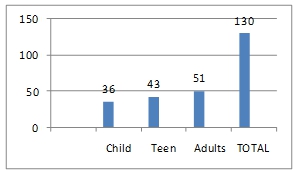
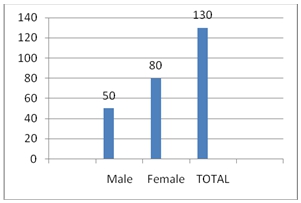
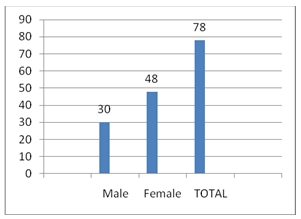
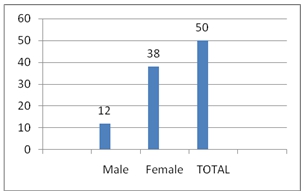
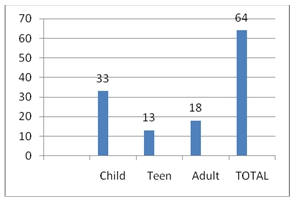
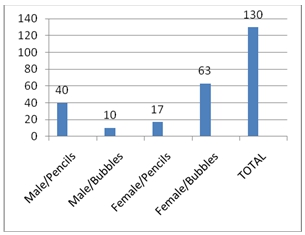
References
Babin, B. J. & Babin, L. A. (1996) Effects of Moral Cognitions and Consumer Emotions on Shoplifting Intentions. Psychology & Marketing (1986-1998), 13, 785.
Blanco, C., Grant, J., Petry, N., Simpson, B., (2008). Prevalence and correlates of shoplifting in the United States: results from the national epidemiologic survey on alcohol and related conditions (NESARC). The American Journal of Psychiatry. Washington: 2008. Vol. 165, Iss. 7; pg 905, 9 pgs.
Researchers discuss the prevalence of shoplifting in the United States, and the correlation of the presence of comorbidity as a part of the disorder when diagnosed as kleptomania. Research suggests that this suggests that the syndrome to be linked with several areas of psychopathology, together with impulsive tendencies.
Buckle, A., Farrington, D., (1984) An observational study of shoplifting. British Journal of Criminolgy: An observational review of crime and society. 1984; 24:63-73.
Buckle and Farrington discuss the lack of adequate methodology and measurement in place to accurately report and record actual occurrences of shoplifting. The authors maintain that more effort along with a standardized rubric-type format to correctly discern who commits the crime, and
Carter, N., Hanssen, L., Hohnberg, B., & Melin, L. (1979). Shoplifting reduction through the use of specific signs. Journal of Organizational Behavior Management, 2, 73-84.
Researchers employed the use of signs and messages to study the deterrent effect in relation to shoplifting rates and occurrences. In two data collections, it was found that promotional signs increased the number of shoplifting occurrences. The results are of interest to retailers as they denote promotional activities for some products may produce a negative side effect by increasing theft.
Cox, A. D., Cox, D., Anderson, R. D. & Moschis, G. P. (1993) Research note: Social influences on adolescent shoplifting – Theory, evidence, and implications for the retail industry. Journal of Retailing, 69, 234.
Dabney, D. A., Hollinger, R. C. & Dugan, L. (2004) WHO ACTUALLY STEALS? A STUDY OF COVERTLY OBSERVED SHOPLIFTERS*. Justice Quarterly, 21, 693-728.
Glascock, S.G., Rapoff, M.A., & Christopherson, E.R. (1988). Behavioral methods to reduce shoplifting. Journal of Business and Psychology, 2, 272-278.
The researches acknowledge that gathering complete data on the statistics of shoplifting are difficult to complete given the fact that shoplifters operate, for the most part, covertly. They propose that more effort should be made by criminologists to use observational studies. Addressed also is the affect that appropriate signage may influence a shoplifter to deter their behavior; however, the deterrence may only be temporary or location-related.
Kivivuori, J. (2007) Crime by Proxy :Coercion and Altruism in Adolescent Shoplifting. The British Journal of Criminology, 47, 817-833.
Krell, H. (2002). Celebs stealing for kicks? Interview on Good Morning America,2002. Web.
McNees, M., Egli, D., Marshall, R., Schnelle, J., & Risley, T. (1976). Shoplifting prevention: Providing information through signs. Journal of Applied Behavior Analysis, 2, 399–405.
McNees’ team of researchers accrued data and statistics on the effect of signage and the reduction of shoplifting rates. Even as the signs deterred shoplifters, it did not affect overall sales averages, which may indicate that those who intended to shoplift, after being reminded through signage of the moral obligation, left the store without either purchasing or shoplifting the item(s). The average number of items missing per day during intervention was 1.30, with sales averaging 1.04. During intercession, the number of shoplifted or missing items per day dropped to 0.88; while sales remained, to a large extent, level (1.00). When moral signage was removed, the number of missing items increased to 1.4 per day.
Schneider, J. L. (2005) The Link between Shoplifting and Burglary; The Booster Burglar. The British Journal of Criminology, 45, 395-401.
Simons, A, Irwin, D., Drinnien, B., (1987). Maslow’s hierarchy of needs. Psychology- The Search for Understanding, 18-19. West Publishing Company, New York.
Siwinski, D., (2009). Data Chart: Figure 1: Mallory Square Observed Shoplifting Behavior 5:00p.m. – 7:30p.m. Created in 2007 MSExcel application.
Siwinski, D. (2009). Data Chart: Figure 2: Mallory Square Observed Shoplifting Behavior 7:35 – 10:00 p.m. Created in 2007 MSExcel application.